The best iPhone to buy in 2023: our ultimate guide
to tie us over. How about that?
The iPhone 14 Pro and Pro Max got an entirely new camera system with a 48 MP main sensor — something that the non-Pro models were spared. Plus, the Pro variants are the only ones to have an Always On Display currently.
It’s a hefty investment, for sure, but certainly offers the top-tier Apple experience, and also one of the best phones right now in general. It starts at $1,100 for the base model, which has 128 GB storage, and that’s a bit harsh, especially if you plan on enjoying the improved cameras, cinematic mode, and its ProRes video capabilities. In fact, iOS itself will not let you record in 4K ProRes unless you have a higher storage capacity — 256 GB and up.
The Pro models of the iPhone 14 family are also the only ones where you will find a fresh new design element — the Dynamic Island. It’s a new way of incorporating the notch cutout for the Face ID system, which is nested at the top of the screen. Instead of being a thickening of the frame, the Dynamic Island is now a cutout plopped there, separate from the bezel of the phone. It moves and breathes with notifications, adding some flair to an otherwise stale design element.
iPhone 14 Pro
PhoneArena Rating:8.8/10
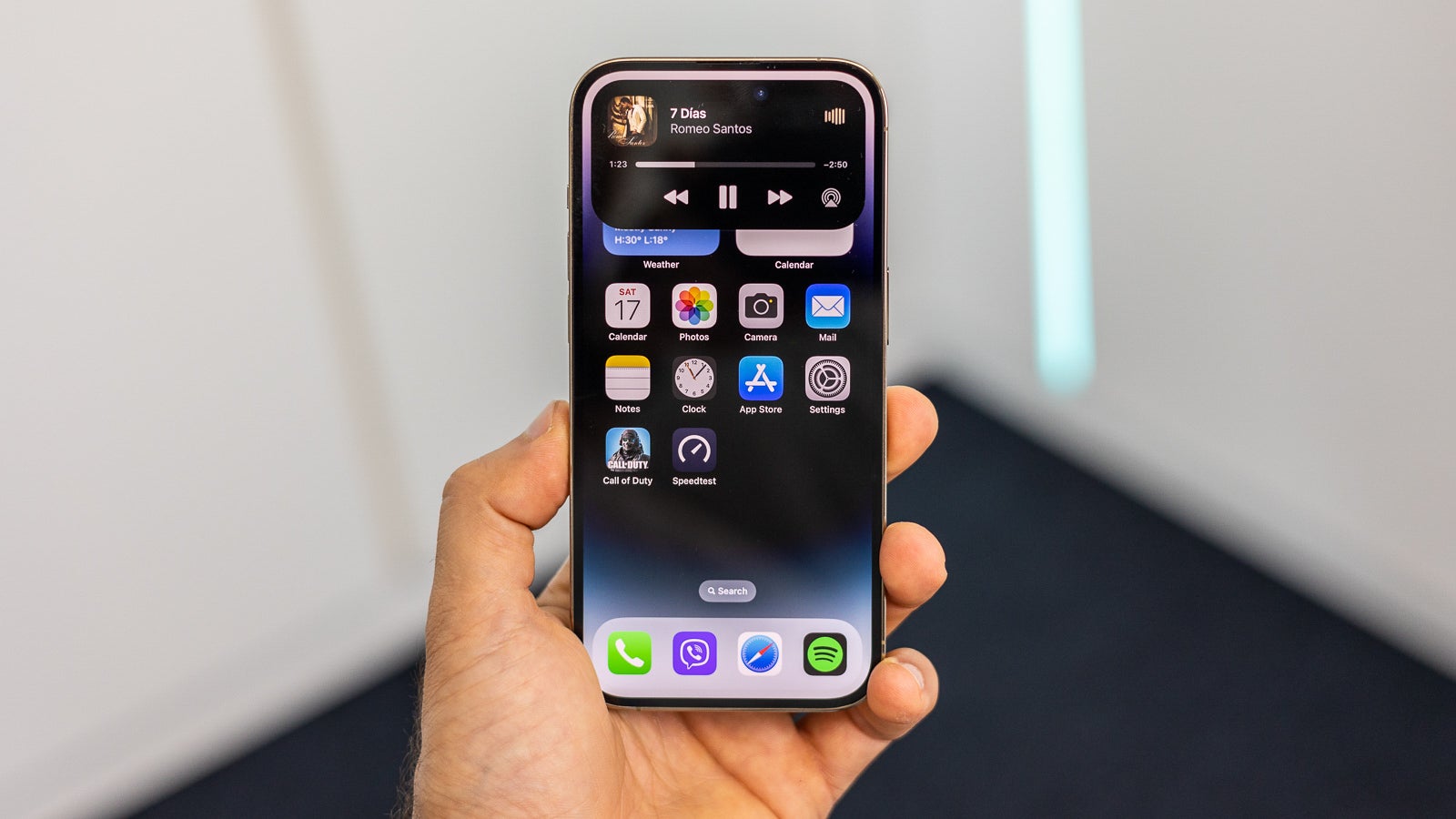
(Image Source – PhoneArena) The iPhone 14 Pro
Besides that, the iPhone 14 Pro costs $100 less than a Pro Max, so you can put that money difference towards buying a larger storage model. The thing you will miss is the better battery life of the Pro Max, plus some more screen real estate, the latter being a double-edged sword, depending on occasion.
Again, if you want the new Always On Display feature, your options are limited to the Apple iPhone 14 Pro or Pro Max.
Read more: iPhone 14 Pro review
iPhone 14 Plus
PhoneArena Rating:8.6/10
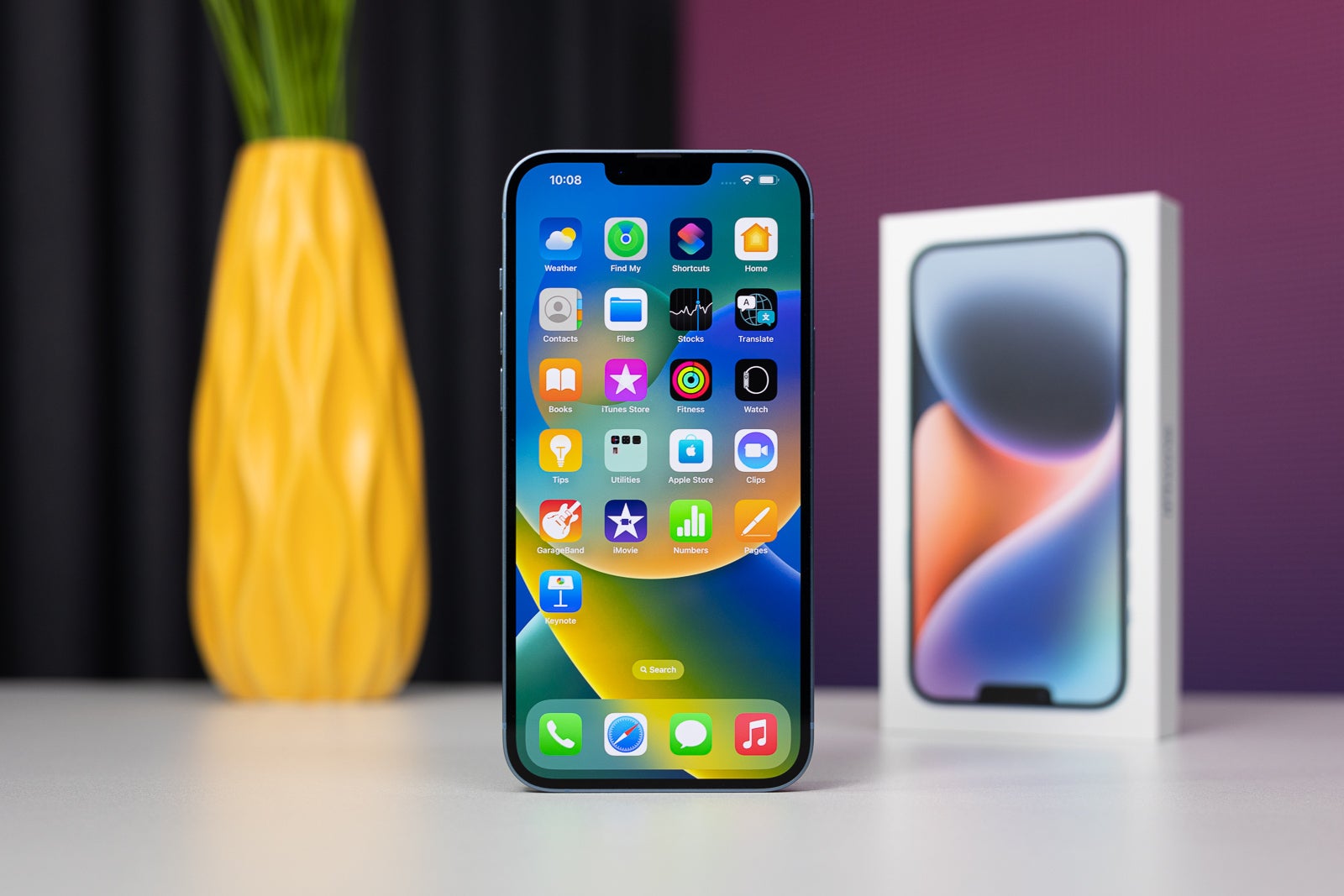
(Image Source – PhoneArena) The iPhone 14 Plus
Being a non-Pro model, it doesn’t have a Dynamic Island — the Face ID system of the iPhone 14 Plus and iPhone 14 is located in the familiar notch cutout at the top of the screen. However, the niche features that the 14 series is known for, like Crash Detection and Emergency SOS via Satellite, are here.
Read more: iPhone 14 Plus review
iPhone 13
PhoneArena Rating:8.5/10
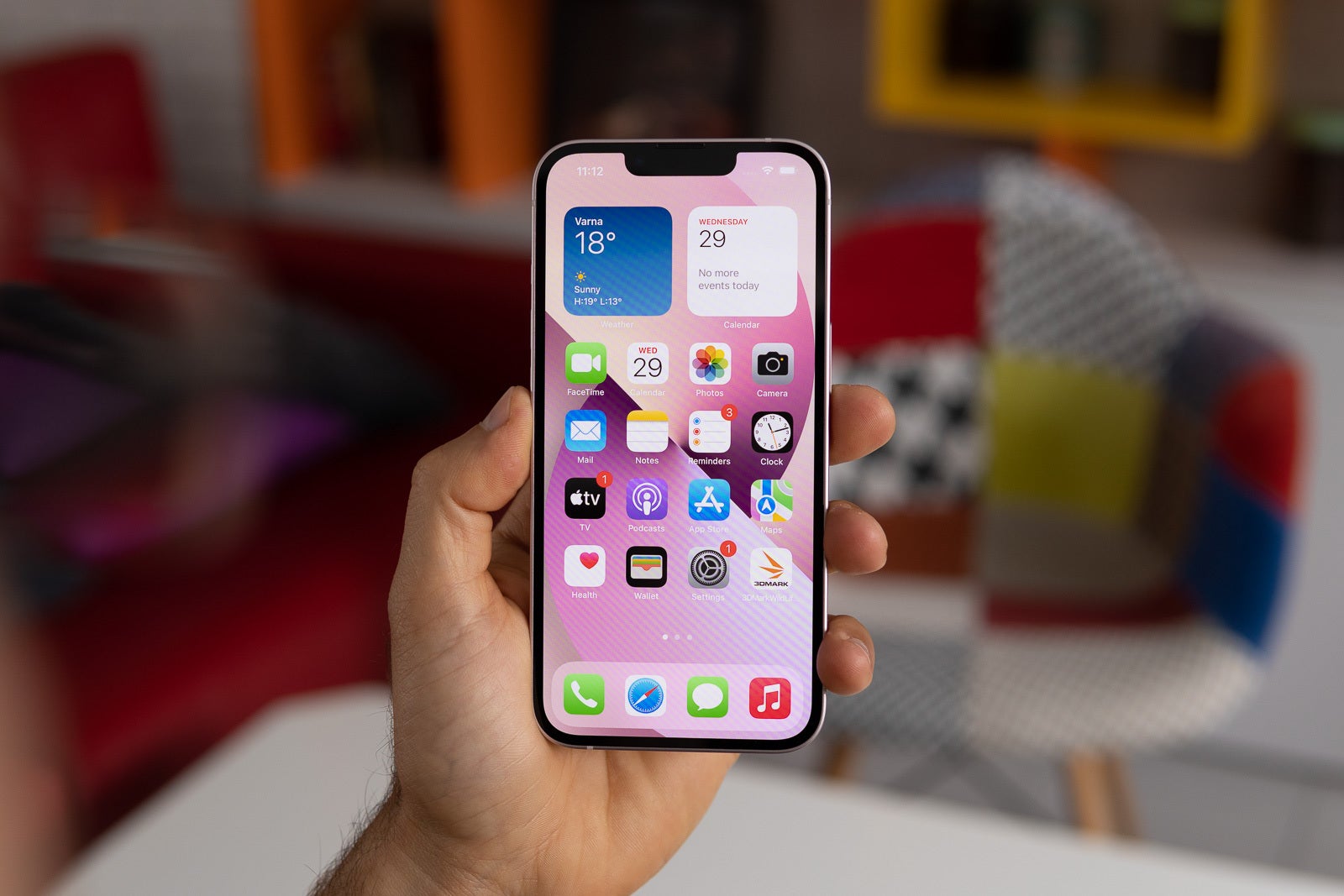
(Image Source – PhoneArena) The iPhone 13
The iPhone 13 had a lot of tiny, but meaningful upgrades — a minor performance bump, a better battery life than its predecessor, a few improvements to the rear cameras. In fact, we find that the dual camera systems of the new iPhone 14 and the iPhone 13 are comparable. Not even the huge Night Mode improvements, promised by Apple, are that noteworthy.
With all its parts combined, the Apple iPhone 13 is a very solid phone for a lowered price of $699 (or $729 unlocked). This entry point will still get you 128 GB of storage, which is not at all bad in 2023. And it’s $100 less than an iPhone 14 — you will miss out on some of the more niche features, like Crash Detection or satellite SOS. But, considering we’ve been functioning without them thus far, and hoping you never ever need them — maybe it’s a premium worth forgoing.
It is also worth noting that the iPhone 13 is the last series with a physical SIM tray (in the US), if that’s something that might sway your decision.
Read more: iPhone 13 review
iPhone 13 mini
Last chance to get a mini iPhone for now
PhoneArena Rating:9.0/10
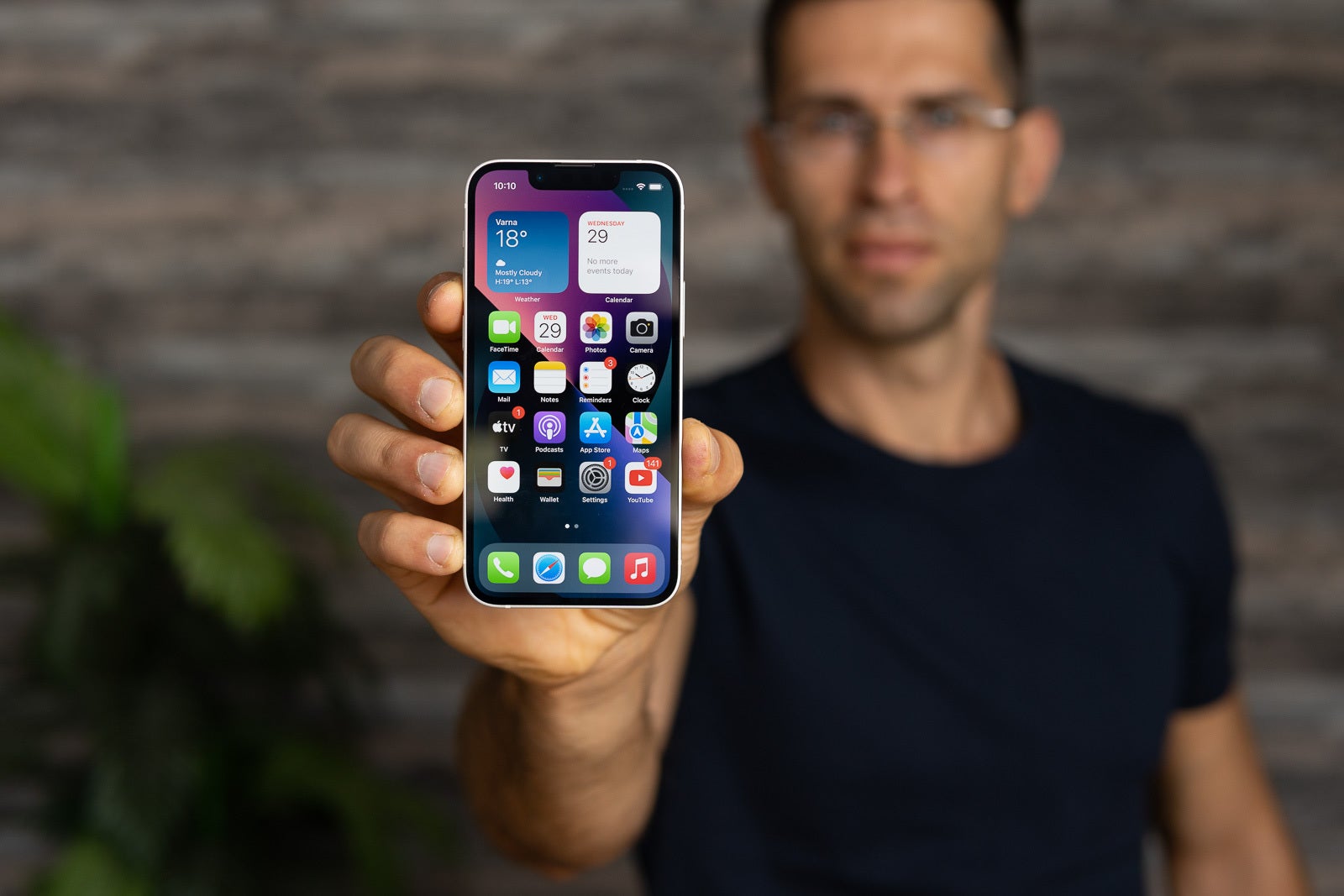
(Image Source – PhoneArena) The iPhone 13 mini
Despite its size, it’s still fully capable — with MagSafe and wireless charging, Face ID, and the same screen quality you will find on the iPhone 13. Just… smaller.
Some retailers may still have stock of the old iPhone 12 mini, but unless you find it at a massive bargain, we do suggest you keep to the iPhone 13 mini as your main choice. Reason being the battery life — the 13 series made huge improvements here, and the mini models, having so little space for batteries, need every bit of improvement in that regard.
Read more: iPhone 13 mini review
iPhone 12
Cheapest variant with the modern iPhone design, MagSafe, and Face ID
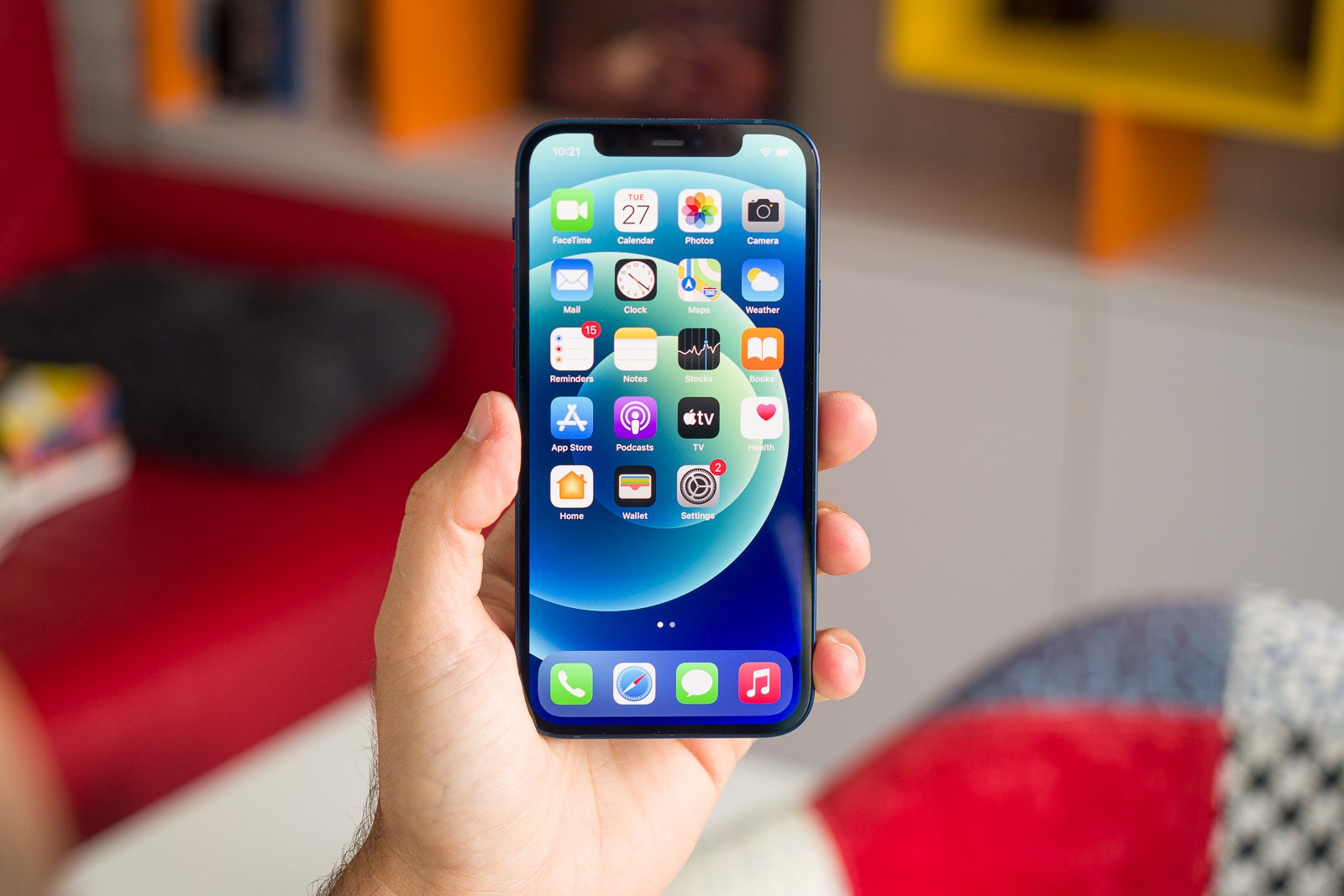
(Image Source – PhoneArena) The iPhone 12
Needless to say, the iPhone 12’s camera is outshined by its successors, but if you are not a shutterbug and just want a dependable snapper for casual memorabilia and social media posting — it will do fine. It did so in 2020, which isn’t that far back. We would call the iPhone 12 the de facto mid range iPhone of today.
Read more: iPhone 12 vs iPhone 13
iPhone SE (2022)
Compact, classic design, most affordable iPhone
PhoneArena Rating:9.0/10

(Image Source – PhoneArena) The iPhone SE from 2022
Now, if you are looking at the SE simply because you want a cheap iPhone, then an iPhone 13 mini or an iPhone 12 might be a much better choice. The SE’s shortcomings are too much of a sacrifice for those that want to spend a lot of time with the device in-hand.
But if you are looking for the simple, reliable Apple iPhone experience, just as a means for communication, with the familiarity of Touch ID, the classic iPhone design that will keep accepting all of the cases you’ve got for the iPhone 8 or the iPhone SE (2020), and continued software support, well — here it is.
Read more: iPhone SE (2022) review
Which iPhone is the best value for your money?
Looking at the present Apple iPhone lineup, we would say that the iPhone 13 is probably the best value right now. Its base tier comes with 128 GB of storage, which will be plenty enough for most users out there. On the inside and out, it is not worse than the iPhone 14, which was supposed to dethrone it. It does lack a 120 Hz screen and a telephoto camera, which is a shame, but such is the plight of non-Pro iPhones.If you want those premium features, you’d have to make quite the leap in price.
However, the good news is that some wireless carriers and 3rd party retailers still have units of the iPhone 13 Pro and Pro Max in stock. If you are craving that telephoto camera for better portraits, and the smoothness of a ProMotion display — you may do well seeking one of those out.
Thanks to Apple’s software support, the 13 series still has a long life ahead of it, so it’s a worthwhile investment at this point in time.
How to choose the iPhone that best fits your needs?
There are two things to consider when buying a new phone. Your usage habits and your budget. Plus, it also helps to pay attention to how long the phone will be supported for. Despite Android manufacturers making huge strides in this aspect in recent years, only the iPhone is known for getting 5 years of timely and steady OS updates.
It also helps that smartphone tech development has steadied in recent years, finding a comfortable plateau, and new features don’t pop up at a relentless pace. Meaning, new phones stay new for longer, as they aren’t immediately outshined by the next best thing.
Now, a lot can go wrong in these years, such as batteries going bad, but it’s worth noting that Apple has upped its game considerably since the old iPhone 6 fiasco.
So, as far as usage habits go, you need to consider this:
Phone size and design:
- Large phone: the Max and the Plus – if you watch a lot of videos, play a lot of games, browse tons of social media on your iPhone, or even edit your own clips and pictures, you will probably want to sacrifice the comfort of a small device and gain the benefit of a larger screen. In that case, the Pro Max models or the new iPhone 14 Plus will work out best. They also have the benefit of improved battery life, which lends itself well to your poweruser needs.
- Medium size: the regular models – you may wish to have a more comfortable grip on the phone, as you use it more to reply to messages and only watch talking head style YouTube videos. The regular iPhone with no Max or Plus monikers seems to strike this balance well. The screen has enough room for comfortable thumb-typing, and is big enough for the occasional enjoyment of multimedia. Yet, it’s not too large and you won’t be overwhelmed by its size if you decide to stick it in a case.
- Super compact: the mini – if you are out looking for a tiny smartphone that’s easy to pocket, yet packs a performance punch and a dependable camera — the iPhone 13 mini is one of your very limited options. And it might as well be the best one, considering how much life it has left in it, thanks to the processor inside and Apple’s software support habits.
- Classic comfort, unexacting and simple: iPhone SE – if you or whoever you are buying for, prefers the older iPhone look and feel, with a Touch ID button — the only option is the iPhone SE.
Phone Features
- Camera – if you want a telephoto camera for better zoomed-in photos and more natural portraits, your option is quickly limited to the Pro models. Furthermore, if you want to experiment with the new-ish Cinematic Mode as well as the Photographic Styles — you need to go with an iPhone 13 series at the least. Needless to say, if you want the absolute best and most advanced Apple camera to date — you will find it on an iPhone 14 Pro and Pro Max.
- Screen quality – Across the board, Apple uses OLED panels for all recent iPhones, save for the iPhone SE. So, color reproduction and accuracy will be on equal levels across models. The Pro variants, however, have brighter screens, capable of hitting 2,000 nits. Impressive as it is, in the real world, you will rarely need that much brightness, so that’s not the real selling point here. No, that would be the 120 Hz ProMotion screen that is still being held hostage by the Pro iPhones — from the iPhone 12 Pro onwards.
Additionally, the iPhone 14 Pro and iPhone 14 Pro Max are the only ones with LTPO displays, capable of bringing their refresh rate down to 1 Hz. Apple utilizes this technology to get the Always On Display feature working on them — and only them, for the time being.
- Safety and security – The Secure Enclave is a subsystem within Apple chips that is present on all recent iPhones, making sure your sensitive data is encrypted and held safe on-device. As far as cyber safety is concerned, all modern Apple phones have you covered.
As for physical safety, iOS does provide Medical ID and Emergency SOS on all of them, however the new iPhone 14 series has a slight edge. If you find yourself an avid trekker, you may want the new satellite SOS feature, for some peace of mind. That and the new Crash Detection feature are only found on the 2022 iPhones.
Battery life
Apple always aims for an “all day battery life” with all its mobile devices. It typically achieves that, especially since iOS is fantastic at preserving battery charge when in standby mode. Some, however, exceed those expectations — specifically the Plus models and Pro Max models, which have room for larger batteries in them.
There are also some models that fall short — like the iPhone 12 mini, which wasn’t very dependable with its battery endurance. Especially if scanning often for an unreliable 5G connection.
Aside from that small mishap, most iPhones in recent years have had a dependable battery life.
Performance
in the case of the Apple iPhone, we typically trust that the performance is — and will be — top-tier for years to come. The Apple A silicon is excellent and way ahead of the game, outperforming and outlasting the competition on a regular basis. This is why Apple is comfortable with releasing an iPhone 14 series with the same chips that powered the iPhone 13, for example. Here is a rundown of the contemporary models and their capabilities:
- Apple A16 Bionic (iPhone 14 Pro, Pro Max): hexa-core, first Apple chip built on 4 nm process. Up to 3.46 GHz clock speed, 5-core GPU
- Apple A15 Bionic (modified for iPhone 14, 14 Plus): hexa-core, 5 nm. Up to 3.23 GHz clock speed, 5-core GPU
- Apple A15 Bionic (iPhone 13, 13 mini): hexa-core, 5 nm. Up to 3.23 GHz clock speed, 4-core GPU
- Apple A14 Bionic (iPhone 12): hexa-core, 5 nm. Up to 3.1 GHz clock speed, 4-core GPU
In other words — if Apple sells it on its website, it still considers it fast enough to wear the brand on its back with pride.
Here’s the performance of the iPhones in the lists on benchmark tests:
Why should you trust this buying guide
The Author
The Publisher
PhoneArena has been around since 2001 as a platform where phones can be explored, compared, and pitted against each other. For the 20 and more years since we first started, we’ve been evolving our experience and growing our knowledge. We now lead an audience of over 5 million monthly US readers to navigate through the mobile tech world.
The Approach
We believe that there is not one true phone that is “the best” as each user has their unique needs and preferences. However, we make sure to test every phone through a wide range of testing procedures and review approaches, so we can find where each phone shines and what it lacks. We also strictly follow our rating guidelines.On top of all that, you’ll have our professional opinion about each phone after we spend a serious amount of time with it. All that is done to help you make the best and most informed decision on which iPhone is “the best” for you.


